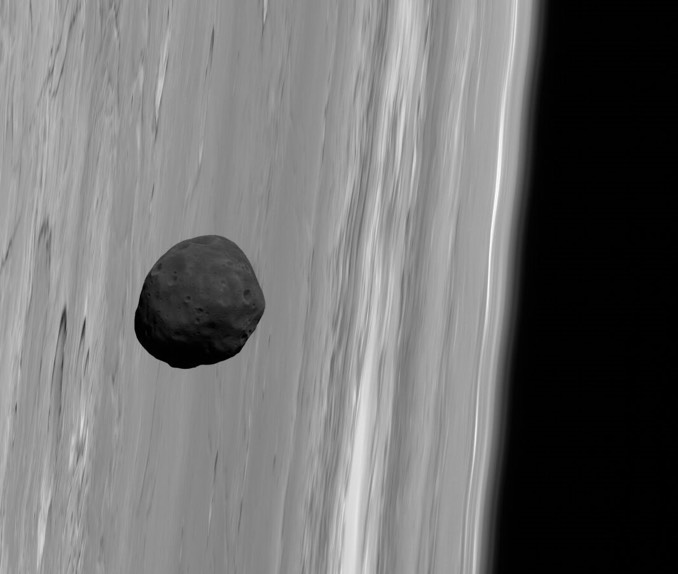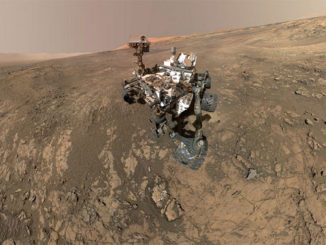
In shape and colour, the martian moons Phobos and Deimos resemble primitive asteroids, leading some theorists to to conclude they likely are bodies that wandered too close and were captured by the red planet’s gravity in the distant past.
But critics say the orbits of the moons, the degree to which they are tilted, do not fit the capture scenario.
Researchers re-evaluating data collected two decades ago by NASA’s Mars Global Surveyor spacecraft during a close flyby of Phobos early in its mission say they have found fresh evidence the moon could be the result of a titanic impact that blasted debris into space that later formed much if not all of the satellite.
“If you talk to the people who are really good at orbital dynamics and figuring out why certain bodies orbit the way they do, they say that, given the inclination and the details of Phobos’ orbit, it’s almost impossible that it was captured,” said Tim Glotch, a geoscientist at Stony Brook University in New York.
“So you have the spectroscopists saying one thing and the dynamicists saying something else.”
Glotch and his students re-assessed mid-infrared data collected by the Mars Global Surveyor during a 1998 flyby of Phobos as the spacecraft moved into its final science orbit. Those data then were compared with readings from a meteorite that fell to Earth near Tagish Lake in British Columbia, which some researchers say likely came from the sort of D-type asteroid Phobos most resembles.
That similarity is a key element in the captured-asteroid scenario.
“We found, at these wavelength ranges, the Tagish Lake meteorite doesn’t look anything like Phobos, and in fact what matches Phobos most closely, or at least one of the features in the spectrum, is ground-up basalt, which is a common volcanic rock, and it’s what most of the Martian crust is made out of,” Glotch said. “That leads us to believe that perhaps Phobos might be a remnant of an impact that occurred early on in Martian history.”
In a study posted in the American Geophysical Union’s Journal of Geophysical Research: Planets, Glotch does not argue Phobos is made up entirely of material blasted away from Mars. But the data indicate Phobos could contain at least some Mars material and possibly a mixture of planetary debris and material from the impactor.
Marc Fries, a planetary scientist at the Johnson Space Center in Houston who was not involved in the new study, said the new results, while not definitive, are intriguing.
“The issue of the origins of Phobos and Deimos is a fun sort of mystery, because we have two competing hypotheses that cannot both be true,” he said. “I would not consider this to be a final solution to the mystery of the moons’ origin, but it will help keep the discussion moving forward.”



